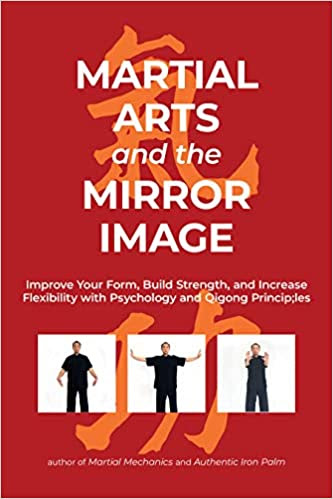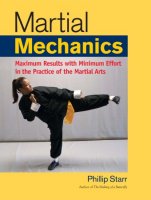By Phillip Starr
For many decades
now, there has been an ongoing argument regarding the “mysterious”
force that is often referred to as “qi.” Americans first heard
of it when it was introduced (via taijiquan) by the martial arts
media of the time. Since then, there has been a plethora of
“masters” who, for a nominal fee (of course) will demonstrate or
teach hungry Westerners about the ”secrets” of this inscrutable
concept. The result has been that many people refuse to believe that
such a thing exists and they go about practicing their (internal)
martial disciplines without concerning themselves with the subject. Much of the
problem is that they don’t understand the actual word/concept in
terms of the Chinese language. As the renowned scholar, Samuel
Hayakawa, told us, “We are limited in our thinking (and ability to
understand certain concepts) by our language.” The word “qi”
doesn’t fully translate very well into English and the (Chinese)
meaning of it, and how it’s used in their culture, is not
well-understood in the West.
The old character
(not the new “simplified” Chinese character) for qi -氣
-
is made from two radicals; One is the character for rice, which is
placed inside a radical that refers to clouds, vapor, etc. So it
represents boiling rice and the steam rising above it. This is why I
like the older form of Chinese characters; the new “simplified”
method may make them easier to memorize and write, but much of the
meaning (of the original radicals) is lost.
The word for
energy (one of the words for it) is huoli. The first radical, huo,
means “live” as in the concept of “alive.” Li refers to a
force/power of some kind. Thus, “life force/power.” The concept
of qi refers not only to vapors, but also to a sort of “life
energy.” It is that which makes us alive (it dissipates at death).
We can build a complete human being – or any other creature, for
that matter – but try as we might, we cannot make it alive. No qi,
no life.
That said, qi is
not a “thing”, like a stone or even water. It cannot be easily
seen, measured, or held in the hand. Like love and other similar
concepts, we cannot see or measure it but we can easily see and feel
its effects. Most forms of energy occur naturally, as the result of
combining certain things. Without these “ingredients”, the
energy will not exist. Wind depends on certain conditions existing
at the same time, and so on. We say that wind is a
“natural-occurring” energy but in reality, certain “ingredients”
must be brought to the fore first. The same is true of qi. Qi
itself, is, in fact, a naturally-occurring form of energy.
Qi – form of
energy that we cannot as yet measure – exists all around us, just
as water surrounds a fish. The fish cannot exist outside of it and
is unaware of water or its constituent parts. When we breathe, we
inhale oxygen AND qi…although we’re not necessarily aware of it.
If we stop gathering oxygen or qi, we die.
So, qi is a
natural energy form and you “emit” it all the time, especially
when you move. It does not, however, add any additional power to
your movement(s) unless it is focused properly. What you naturally
emit (or radiate) in terms of qi is rather small and not focused at
all.
Being able to express
it through our bodies, certain “ingredients” are required. So,
what are the ingredients that must be present in order for us to
express (or emanate) qi? Here is a basic list for static postures
(like standing or sitting), but each item is likely more than what
you may think it is;
Mental Bearing
Posture
Relaxation
To really learn
each of these items requires instruction from a good teacher. Mental
Bearing has to do with your self-image (see my book, MARTIAL ARTS AND
THE MIRROR IMAGE), and your intention/will. Moreover, it has to do
with directing your “yi” (mind, intention, will) because as I’ve
mentioned in previous articles, where the yi goes, qi goes.
Posture involves
much more than simply standing straight. The weight of the upper
body must rest atop the hips without any tension being detected; the
hips must be held just right, so that the femurs (bones of the thigh)
rest squarely on top of them. The same holds true for the knees and
ankles.
Relaxation is
another problem altogether. There can’t be pockets of tension
anywhere – especially in the shoulders and neck, anywhere in the
back, hips, knees, and ankles. If the posture is exactly right,
there will be very little, if any, tension. But learning to do this
requires considerable practice. That’s why many gong-fu styles
(especially the internal schools) place great emphasis on the
practice of standing postures.

MOVEMENT involves
adding a whole new can of worms to the mix. To EMIT qi in any given
movement requires the same “ingredients” as when standing (or
sitting) still. The yi must be focused, the posture must be such
that the body’s structure supports the movement, and there must be
no unnecessary tension at all. It sounds like it shouldn’t be too
tough to do…but believe me, it takes a LOT of practice over an
extended period of time! This is why taijiquan is practiced in
slow-motion initially; so you can ensure that the positioning of all
the joints is just right and so you can FEEL any pockets of
unnecessary tension and eliminate them.

Actually, ANY
movement you make (in so far as martial arts movements) emits qi, but
lack of yi, kinks in the posture (which act like kinks in a hose),
and unnecessary tension will reduce it,,,usually to little more than
a trickle. Thus, many practitioners of internal arts deny the
existence of qi because they cannot feel it or emit it in a powerful
way (fajin, fali). Their lack of mental focus (including doubts
about their ability to do so), flaws in their movements and/or
posture(s), or excessive tension prevents them from doing so. But
many are convinced that their movements and postures are perfect and
yet, they cannot perform fajin; their refusal to examine themselves
in a clear mirror prevents them from ever achieving any measure of
success.

The special body
movements that are utilized when “fajin” (emitting power) are
intended to AMPLIFY the emission of energy much like the nozzle on
the end of a hose focus the water, turning it from a flowing stream
to a concentrated blast. The smaller the movement (the tighter the
nozzle), the more concentrated and effective is the power that is
released…naturally.

.jpg)
.jpg)










.jpg)
.jpg)
















.jpg)





.jpg)






.jpg)
.jpg)
.jpg)
.jpg)


.jpg)

.jpg)
.jpg)

















